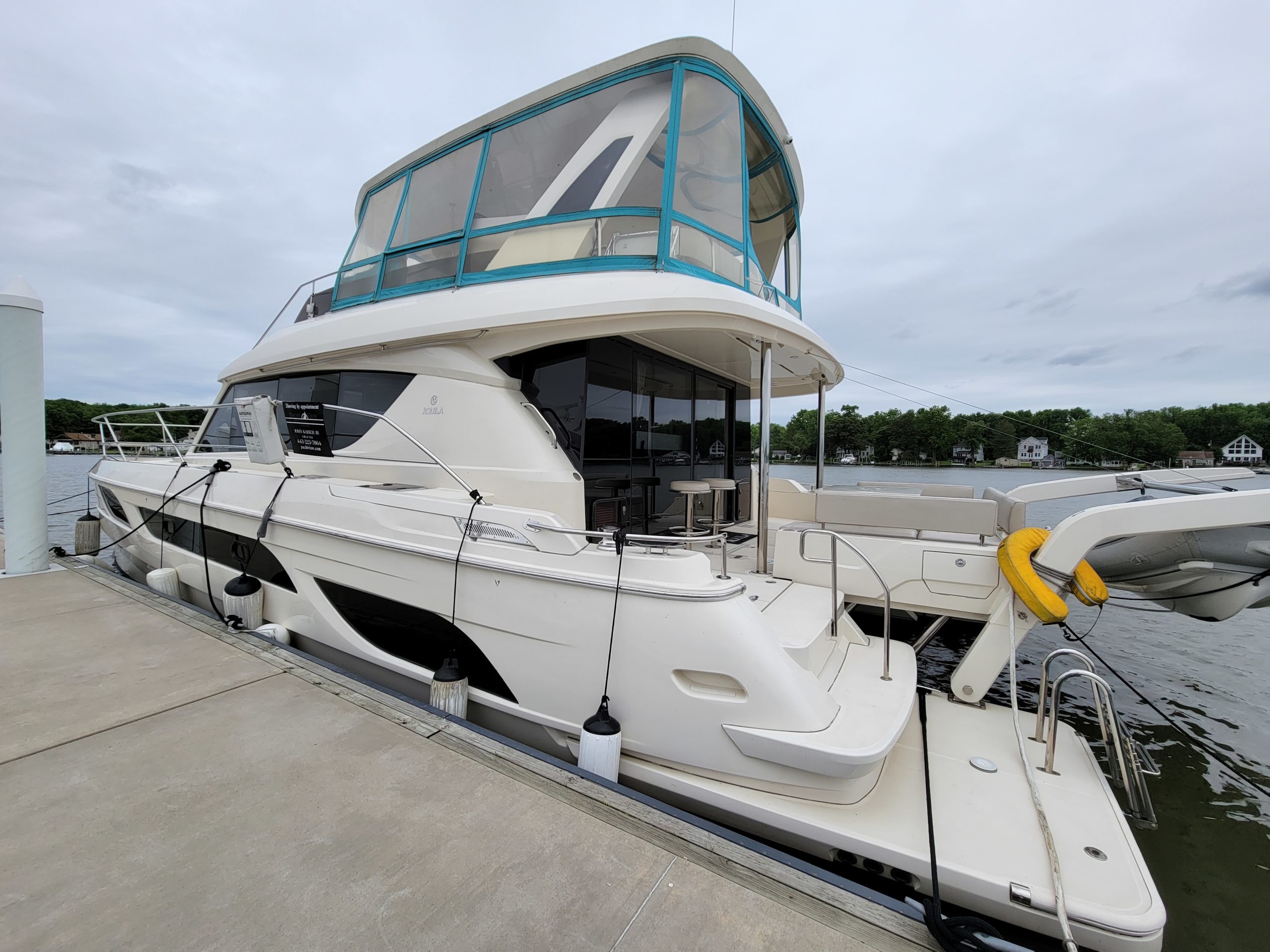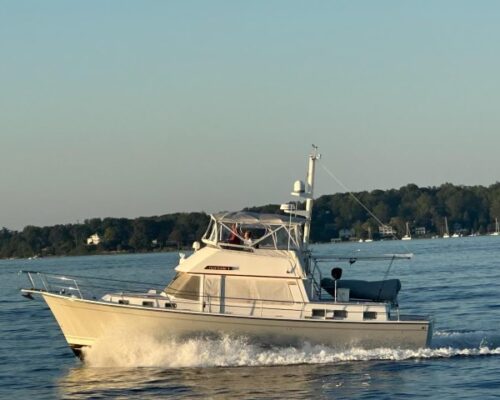Year: 2016
LOA: 25’9″
Beam: 9’6″
Weight: 3,913 lb
Max power: 300 hp
Fuel: 89 gal
www.brigusa.com
www.siroccomarine.com
Ever wonder why law enforcement units, search and rescue agencies, and military services choose big Rigid-bottom Inflatable Boats (RIBs)? Take a demo ride and you’ll see.
Most RIBs have deep, 22- to 28-degree V hulls surrounded by sturdy, inflated Hypalon tubes. A conventional hull with such a high deadrise would be tippy and require extra power to rise onto plane. But on a big RIB, the after ends of the tubes just kiss the water at rest and help the hull rise onto a plane even at low speeds. When the hull comes down on a sea, the tubes cushion the impact and act like giant spray rails to keep the occupants dry.
The RIB concept is a product of the past and current centuries, designed for power and built of materials developed during World War II. They are hybrids offering highly traditional values—smooth ride, great stability, unsinkable safety, dryness and great carrying capacity. They are also light for their fuel efficiency, and their tubes offer effective fendering against docks and other boats.
Downsides? Some loss of interior space and, for most, cost. The RIBs available on the Chesapeake in past years have tended to come from low-volume custom builders who concentrate on the commercial/government markets. Their quality and capability are top-notch, but they usually sell at a 30- to 50-percent premium.
Enter BRIG Boats. Brought to the U.S. through Australian distributor Sirocco Marine, the Chesapeake branch is run by Annapolis skippers Vince Palmeri and Boyd Tomkies (who mans Sirocco’s Fort Lauderdale Office during the work week).
The 25-year-old company is the largest RIB builder worldwide, holding huge market shares in Europe and Australia. BRIG is based in Kharkiv, the second-largest city in Ukraine. Home to multiple technical universities, it is a high-tech manufacturing hub that was once an important contributor to the Russian space program. The BRIG engineers learned about fiberglass and Hypalon while building large cushioning tools for recovering Soviet spacecraft. Some are also trained in aeronautical engineering, which translates well to watercraft design. When the Soviet Union collapsed they turned their expertise to building RIBs.
Hypalon is a synthetic rubber outer layer material developed by DuPont and produced from 1940 until 2010. Other suppliers have developed their own versions since DuPont stopped production. BRIG’s French-made material carries the trade name Orca. Like Hypalon, Orca is highly resistant to abrasion, UV rays, and chemicals, and when combined with high-tech inner fabric is strong, air-tight and puncture-resistant. The industry has also developed sophisticated adhesives and shock-absorbing attachment systems for the tubes and hulls as well as service procedures for dealers to make repairs and install options.
BRIG builds boats on an eight-year model production cycle with about 5,000 each of 30 models, which works out to 15 to 20,000 boats per year.
“We’re interested in selling multiples at reasonable prices, rather than smaller numbers of custom institutional boats,” BRIG’s U.S. sales consulatant, Neil Webster, told me at the Annapolis Powerboat Show.
Webster came to the boat show with BRIG general manager Slava Rodionov from Kharkiv. Rodionov much of his time traveling to shows worldwide to collect feedback from dealers and owners.
The BRIG model lineup includes six Eagle sportboats, four Navigator utility boats and seven Falcon riders and tenders.
The Eagles and Navigators come with center consoles, but the Eagles are set up for water sports, with cushioned seats, generous spaces for coolers, swim ladders and tow posts. The 780 is available with a head in the console and a T-top. The Navigator models also adapt well to water sports, yacht club duties, scuba diving and fishing.
BRIG offers a variety of consoles and seating systems for this line, including saddle-like jockey seats, which are popular in Europe and Australia but fairly unknown here. Don’t knock them till you’ve ridden one. The saddle seats are remarkably comfortable and they offer ample storage inside.
The Falcon tenders are utilitarian, while the Riders are small, quick sportboats for two to four people. The boats are rated for relatively powerful engines, but in each case, BRIG lists minimum recommended horsepower. Gasoline is expensive in Europe, so boaters appreciate efficiency.
So how do BRIGs perform? My experience comes from a ride with Vince Palmeri out of South River in September aboard an Eagle 780 powered by a 250-hp Honda. In the open Chesapeake, a 12- to 15-knot northerly pushed against a strong flood current producing a solid array of short, steep three-foot seas. Palmeri pushed her up to 37 knots and, amazingly, her sharp bottom cleaved those seas open in every direction without hard impact, as the tubes cushioned our landings and knocked down the spray. Yes, the boat moved around enough that we were glad to have sturdy handholds, but we were certainly comfortable. That said, I took a turn at the helm and throttled back to 20 knots, where she loped along quietly like a big Mercedes, with the Honda burning five to seven gallons per hour. Her length allowed her to bridge several of the short seas at once, making the ride even smoother. With her built-in and optional amenities, she’d be a great family boat with a rated capacity for a whopping 16 people, and her list price around $88,000 makes her competitive with comparable conventional boats. Smaller BRIGs carry appropriately lower prices. The 17-foot Navigator 520 with a Honda 75 lists for $32,000.
Europeans and Australians love water sports, and they care very much about seaworthiness, safety and operating thrift. Maybe it’s time we Americans take a hard look at why they love BRIG RIBs.
–John Page Williams




